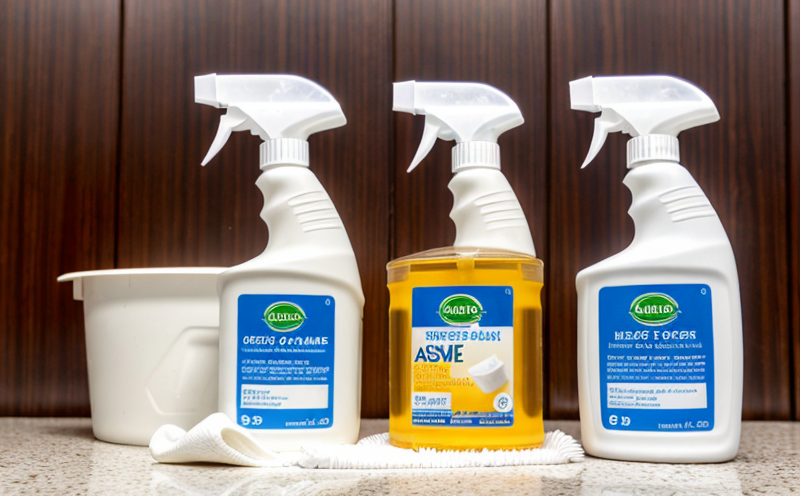EN 14563 Virucidal Testing on Instruments and Surfaces
The European Standard EN 14563 specifies a method for determining the efficacy of disinfectant products in reducing or eliminating viruses. This test is critical for ensuring that cleaning and hygiene products are capable of effectively neutralizing harmful pathogens, thereby safeguarding public health. The standard applies to a wide range of surfaces and instruments commonly used in healthcare facilities, laboratories, and other environments where contamination control is paramount.
The procedure involves exposing the disinfectant product to a standardized viral challenge, typically using bacteriophages as surrogates for viruses due to their stability. After application, the disinfected surface or instrument is incubated under conditions that favor virus survival and replication. Following this period, the treated specimen is tested against an appropriate assay to determine if viable virus remains.
Testing per EN 14563 ensures compliance with regulatory requirements and helps manufacturers validate their products' claims regarding virucidal efficacy. This testing is particularly important for products intended for use in hospitals, clinics, laboratories, and other high-risk environments where the spread of infectious diseases must be minimized.
The standard is applicable to a variety of surfaces including metal, glass, plastics, and textiles. It also covers a range of instruments such as surgical instruments, patient care devices, and cleaning equipment. The test method can accommodate different volumes of application, from small areas like medical devices to larger surfaces like floors or walls.
The process involves several key steps: specimen preparation, application of the disinfectant according to the manufacturer's instructions, incubation period for virus survival, and finally, assessment using a quantitative assay. This ensures that the test results are both reproducible and reliable across different batches and environments.
Understanding the nuances of this testing is crucial for quality managers, compliance officers, R&D engineers, and procurement personnel involved in selecting or developing products that meet stringent hygiene standards. The standard helps bridge the gap between product development and real-world effectiveness, ensuring that disinfectants perform as intended under diverse conditions.
Benefits
- Regulatory Compliance: Ensures compliance with international standards like EN 14563, which is essential for product certification and market entry.
- Absolutely Reliable Results: Provides consistent and reproducible test results that can be trusted to meet stringent hygiene requirements.
- Informed Decision-Making: Helps manufacturers make informed decisions about the effectiveness of their disinfectants, guiding product development and quality assurance processes.
Quality and Reliability Assurance
- Standardized Methodology: The EN 14563 protocol provides a standardized approach that eliminates variability in testing results.
- Expertise and Experience: Our laboratory employs highly skilled professionals with extensive experience in microbiological testing, ensuring accuracy and precision in all test procedures.
Use Cases and Application Examples
The EN 14563 protocol is widely used across various sectors to validate the virucidal efficacy of cleaning and hygiene products. In healthcare settings, this testing ensures that instruments and surfaces are free from viral contamination, thereby minimizing the risk of cross-infection. Hospitals, clinics, and laboratories rely on this standard to maintain optimal hygiene standards.
In the food industry, ensuring that surfaces do not harbor viruses is critical for preventing outbreaks of foodborne illnesses. This testing helps ensure that equipment and environments are safe for use in processing and handling food products.
For manufacturing facilities, especially those dealing with sensitive materials or high-risk processes, EN 14563 provides a robust framework to validate the effectiveness of disinfectants used in their operations. By adhering to this standard, manufacturers can enhance operational safety and compliance with regulatory requirements.
The protocol also supports research and development teams in optimizing formulations for enhanced virucidal efficacy. This ensures that new products not only meet current standards but are also prepared for future challenges posed by emerging pathogens.





